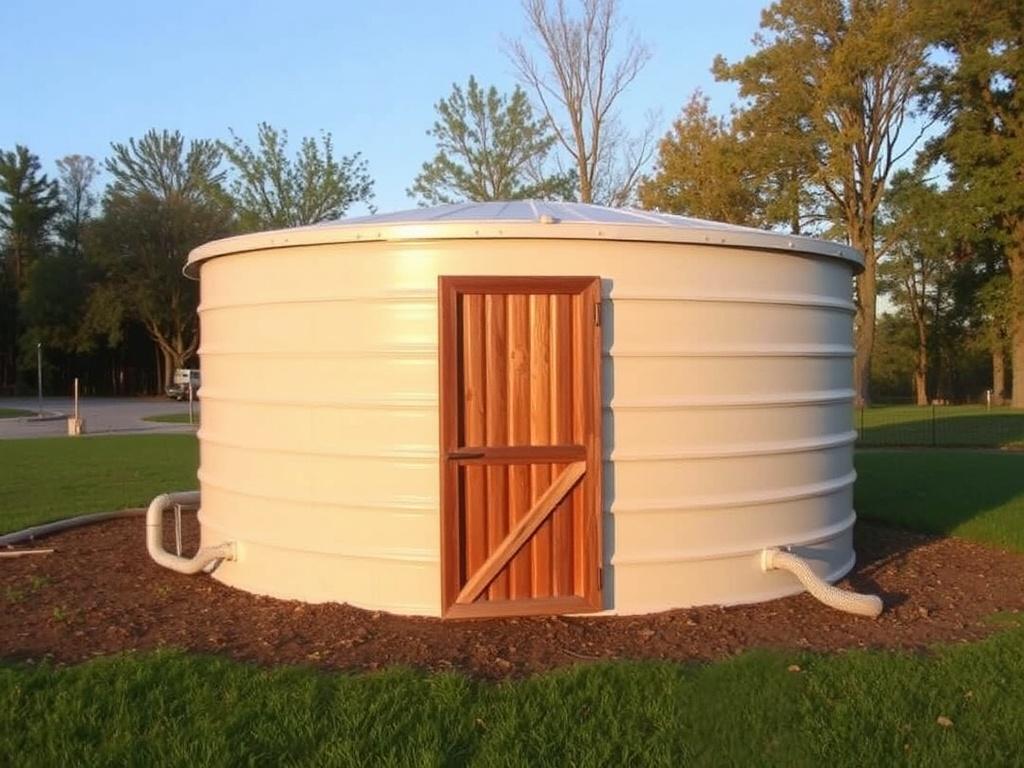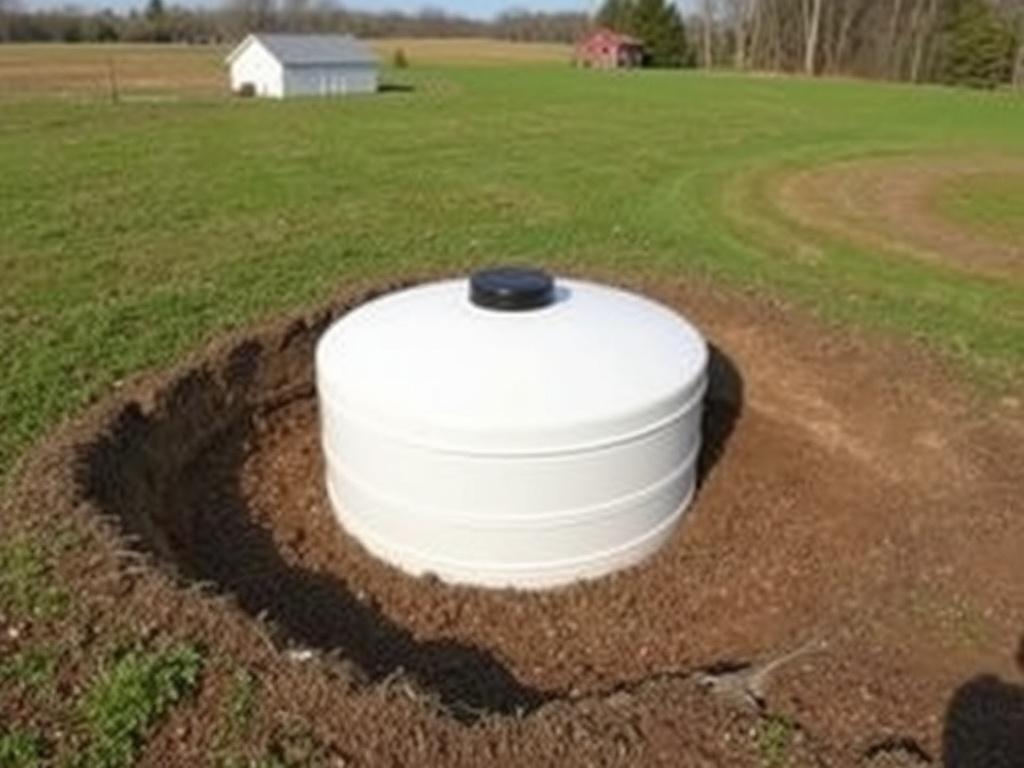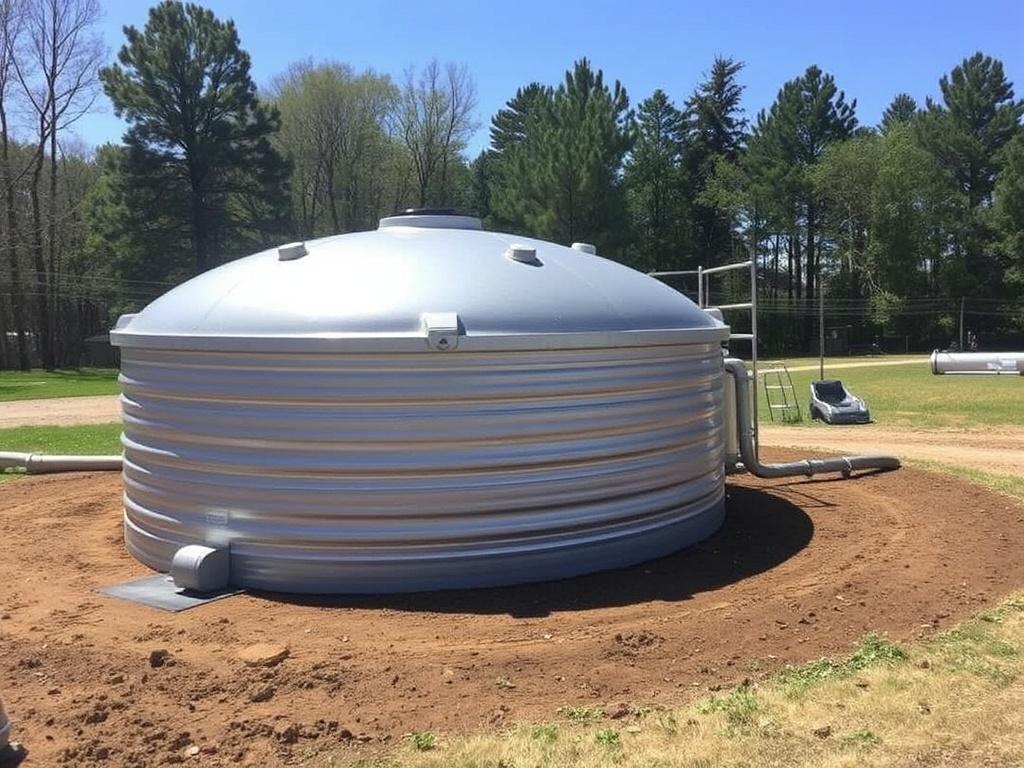Building a barndominium is an exciting way to combine rustic charm with modern living. But one essential part of this process that often gets overlooked is the septic tank system. If you’re planning your dream barndominium, understanding the septic tank for a barndominium is crucial to ensure your home’s wastewater management runs smoothly and efficiently. In this article, we’ll explore everything from choosing the right septic tank, how the system works, maintenance tips, and crucial considerations that can save you headaches down the road.
- What Is a Barndominium and Why Does It Need a Septic Tank?
- Understanding How a Septic Tank for a Barndominium Works
- Septic Tank Components Explained
- Choosing the Right Septic Tank for Your Barndominium
- Size Matters: How Large Should Your Septic Tank Be?
- Material Options for Septic Tanks
- Installing Your Septic Tank: What to Expect
- Step-by-Step Installation Process
- Common Challenges with Septic Tank Installation on Barndominiums
- Maintaining Your Septic Tank for Longevity and Efficiency
- Best Practices for Septic Tank Maintenance
- Signs Your Septic Tank Needs Attention
- Environmentally Friendly Septic Tank Options for Barndominiums
- Advanced Treatment Systems
- Constructed Wetlands
- Composting Toilets and Greywater Systems
- Costs Involved in Septic Tank Setup for a Barndominium
- Common Myths and FAQs About Septic Tanks for Barndominiums
- Myth 1: A Septic Tank Is Maintenance-Free
- Myth 2: All Septic Tanks Are the Same
- FAQ: Can I Use a Barndominium Septic Tank for Heavy Workshop Waste?
- FAQ: How Long Will My Septic Tank Last?
- FAQ: Is It Possible to Add a Septic Tank After the Barndominium Is Built?
- Tips for Barndominium Owners Planning a Septic System
- Conclusion
What Is a Barndominium and Why Does It Need a Septic Tank?

A barndominium, often just called a “barndo,” is a stylish mix of a barn and condominium, a structure that doubles as a living space and workspace, blending rustic and industrial aesthetics. Bars, workshops, garages, and cozy living quarters come together under one roof, which makes these homes both practical and appealing.
However, since barndominiums are frequently built in rural or semi-rural areas where municipal sewer systems are not available, a reliable septic tank system is essential. Unlike traditional homes in cities, these beautiful country homes rely on septic tanks to handle all the waste from bathrooms, kitchens, and other water outlets, safely processing and disposing of it underground.
Understanding How a Septic Tank for a Barndominium Works
Simply put, a septic tank is an underground, watertight container that stores and treats household wastewater. The process involves several crucial stages:
- Separation: Wastewater flows from the barndominium into the septic tank, where solids settle at the bottom forming sludge, and oils and grease float to the top forming scum.
- Decomposition: Natural bacteria break down the sludge and scum, reducing their volume.
- Effluent discharge: The partially treated water (effluent) then exits the tank to a drain field or leach field, where it is further filtered and cleansed by the soil.
Because barndominiums often feature larger, open spaces and sometimes multiple uses, understanding your household’s water and waste production is key to sizing your septic tank correctly.
Septic Tank Components Explained
| Component | Description | Role in the System |
|---|---|---|
| Septic Tank | Watertight container usually made of concrete or plastic | Collects and holds wastewater for treatment |
| Inlet and Outlet Pipes | Pipes directing wastewater in and treated effluent out | Ensure proper flow into tank and out to drain field |
| Baffle or Filter | Device to prevent sludge and scum from leaving tank | Protects drain field by improving effluent quality |
| Drain Field (Leach Field) | Network of perforated pipes and soil | Treats effluent by dispersing it underground |
Choosing the Right Septic Tank for Your Barndominium

Selecting the proper septic tank for a barndominium depends on several factors. Because these homes might have larger square footage or unique septic needs due to workshops or commercial use, sizing and type are essential.
Size Matters: How Large Should Your Septic Tank Be?
The size of your septic tank hinges primarily on two factors: the number of bedrooms in your barndominium and the estimated daily water usage. A general guideline for residential houses is:
- 3-bedroom homes: 1,000-gallon septic tank
- 4-bedroom homes or larger: 1,250 to 1,500 gallons
- Barndominiums with extensive workshop or commercial use: Adjust size upwards accordingly
If your barndominium will feature multiple bathrooms, heavy water use, or a business, consulting a professional to perform a thorough estimation is worth it.
Material Options for Septic Tanks
Traditionally, septic tanks were made of concrete, but nowadays, plastic and fiberglass tanks are rising in popularity. Each has pros and cons for barndominiums.
| Material | Pros | Cons |
|---|---|---|
| Concrete | Extremely durable, heavy (less shifting underground), good lifespan | Expensive, prone to cracking if not installed properly |
| Plastic | Lightweight, easy to install, resistant to rust and corrosion | Can float or shift in areas with high groundwater without proper backfill |
| Fiberglass | Durable and resistant to corrosion, lightweight | Higher upfront cost, requires careful installation to prevent damage |
For barndominiums built on loose soils or flood-prone land, reinforced concrete tanks may be best, but if quick installation and cost-saving are your priorities, plastic or fiberglass might be the way to go.
Installing Your Septic Tank: What to Expect

Installation is a vital phase and must follow local regulations and health department guidelines, which protect public health and the environment.
Step-by-Step Installation Process
- Site Evaluation: A professional inspects the location, soil type, and groundwater level to decide the best placement and type of septic system.
- Permit and Design: Obtain necessary permits and finalize your septic system design based on the barndominium’s size and use.
- Excavation: Digging the hole for the septic tank and drain field.
- Tank Placement: Carefully place the septic tank in the dug hole using heavy machinery.
- Drain Field Installation: Install the network of pipes and gravel beds or alternative drain field solutions.
- Backfilling and Testing: Cover the tank and pipes, then test the system for leaks and proper flow.
Keep in mind that professional installation will ensure everything complies with codes and performs efficiently.
Common Challenges with Septic Tank Installation on Barndominiums
Because barndominiums are often built in rural and sometimes rugged locations, challenges can include:
- Rocky soil making digging difficult and costly
- Seasonal high water tables requiring advanced septic solutions
- Limited space due to property layout or existing structures
- Unique wastewater needs if barndo includes a workshop or livestock facility
Each of these factors should be discussed with your installer and local authorities to develop a system tailored to your specific needs.
Maintaining Your Septic Tank for Longevity and Efficiency
A septic tank is a durable system, but proper care is essential to avoid costly repairs or replacements.
Best Practices for Septic Tank Maintenance
- Regular Pumping: Most septic tanks need to be pumped every 3 to 5 years to remove accumulated sludge and scum.
- Water Conservation: Reducing water use lessens strain on the septic system and extends its life.
- Mindful Disposal: Never flush non-biodegradable items or chemicals that can damage the bacterial environment essential for digestion.
- Drain Field Care: Avoid parking or planting trees above the drain field to prevent damage and root intrusion.
- Monitor System Performance: Slow drains, odors, or soggy ground near the tank or drain field can be warning signs.
Signs Your Septic Tank Needs Attention
| Symptom | Possible Cause | Recommended Action |
|---|---|---|
| Slow draining sinks and toilets | Drain field clogging or tank nearing full capacity | Schedule inspection and possible pumping |
| Unpleasant odors around the septic tank or yard | System malfunction or broken seals | Contact a septic professional immediately |
| Soggy or spongy ground over drain field | Effluent surfacing due to drain field failure | Cease use, arrange emergency service |
| Backups in the plumbing | Full tank or drain field issues | Call a plumber or septic service |
Environmentally Friendly Septic Tank Options for Barndominiums
For environmentally conscious barndominium owners, traditional septic tanks can be upgraded or replaced with green alternatives that minimize impact.
Advanced Treatment Systems
Systems like aerobic treatment units (ATUs) introduce oxygen to speed up the bacterial breakdown of waste, resulting in cleaner effluent and better treatment than standard systems.
Constructed Wetlands
Some rural barndominiums integrate bio-filtration constructed wetlands, where plants and microbes naturally treat wastewater, blending beautifully with the natural surroundings.
Composting Toilets and Greywater Systems
To reduce septic load, some homeowners install composting toilets and separate greywater systems to recycle water for irrigation, reducing wastewater footprint.
Costs Involved in Septic Tank Setup for a Barndominium
Budgeting is essential. Initial costs vary depending on tank size, material, soil conditions, and local labor costs.
| Expense | Typical Cost Range (USD) | Notes |
|---|---|---|
| Septic Tank Material & Purchase | $1,000 – $4,000 | Concrete tanks are typically more expensive than plastic |
| Installation & Labor | $3,000 – $10,000 | Varies with site difficulty and local rates |
| Drain Field | $1,500 – $5,000 | Depends on soil condition and system type |
| Permits and Inspection Fees | $100 – $500 | Local requirements vary |
| Maintenance (Pumping) | $200 – $400 (every 3-5 years) | Essential for long-term care |
Common Myths and FAQs About Septic Tanks for Barndominiums
Myth 1: A Septic Tank Is Maintenance-Free
No septic system is truly maintenance-free. Just like any essential home system, regular pumping and inspections are mandatory.
Myth 2: All Septic Tanks Are the Same
Septic systems come in many varieties, and your barndominium’s unique water use and site conditions demand a customized approach.
FAQ: Can I Use a Barndominium Septic Tank for Heavy Workshop Waste?
Septic tanks should only handle typical household wastewater. Industrial chemicals and heavy workshop waste should never enter the septic system; these can damage the natural bacteria and lead to costly repairs.
FAQ: How Long Will My Septic Tank Last?
With proper care, a concrete septic tank can last 40+ years, while plastic or fiberglass tanks may have slightly shorter lifespans depending on installation and conditions.
FAQ: Is It Possible to Add a Septic Tank After the Barndominium Is Built?
Yes, but it may be more costly and complicated. Early planning during the design phase is always preferable to ensure smooth integration.
Tips for Barndominium Owners Planning a Septic System
- Engage professionals early for site evaluation and permits.
- Keep your property’s layout flexible enough to accommodate the drain field.
- Use water-efficient fixtures to reduce load.
- Avoid planting trees near your septic system.
- Know the signs of septic trouble—you’ll save money and stress by addressing issues early.
Conclusion
A septic tank for a barndominium is an indispensable aspect of rural living that shouldn’t be overlooked. Selecting the right size and type, ensuring professional installation, and following through with regular maintenance will protect your investment and keep your home safe and comfortable for years to come. Whether you’re blending country charm with modern convenience or creating a multifunctional barn-style home, understanding your septic system’s intricacies helps you avoid pitfalls and build your dream barndominium with confidence. Remember, a well-maintained septic system is more than just sanitation—it’s a cornerstone of sustainable rural living and peace of mind.
Помогла вам статья?






